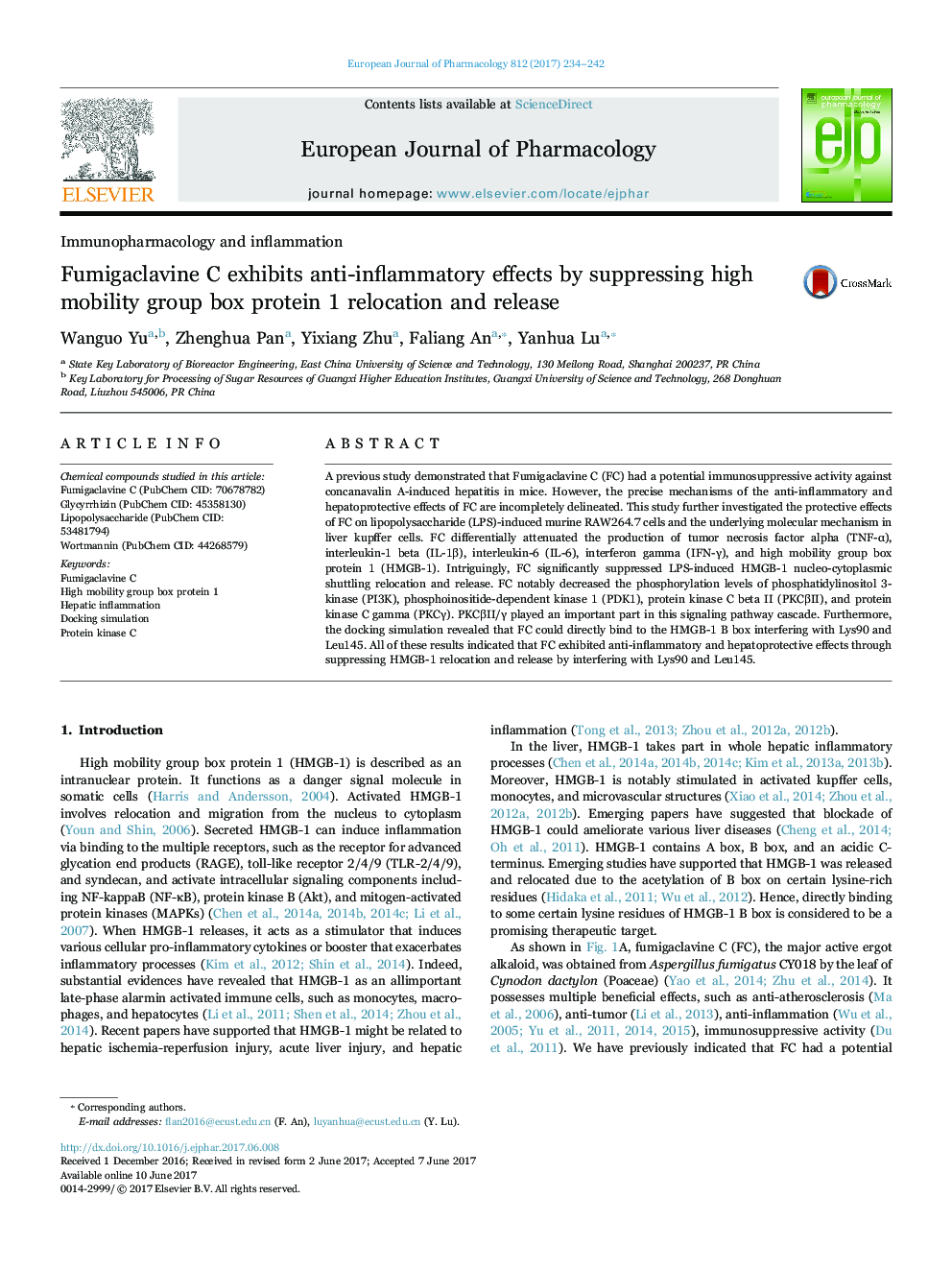| Article ID | Journal | Published Year | Pages | File Type |
|---|---|---|---|---|
| 5554429 | European Journal of Pharmacology | 2017 | 9 Pages |
A previous study demonstrated that Fumigaclavine C (FC) had a potential immunosuppressive activity against concanavalin A-induced hepatitis in mice. However, the precise mechanisms of the anti-inflammatory and hepatoprotective effects of FC are incompletely delineated. This study further investigated the protective effects of FC on lipopolysaccharide (LPS)-induced murine RAW264.7 cells and the underlying molecular mechanism in liver kupffer cells. FC differentially attenuated the production of tumor necrosis factor alpha (TNF-α), interleukin-1 beta (IL-1β), interleukin-6 (IL-6), interferon gamma (IFN-γ), and high mobility group box protein 1 (HMGB-1). Intriguingly, FC significantly suppressed LPS-induced HMGB-1 nucleo-cytoplasmic shuttling relocation and release. FC notably decreased the phosphorylation levels of phosphatidylinositol 3-kinase (PI3K), phosphoinositide-dependent kinase 1 (PDK1), protein kinase C beta II (PKCβII), and protein kinase C gamma (PKCγ). PKCβII/γ played an important part in this signaling pathway cascade. Furthermore, the docking simulation revealed that FC could directly bind to the HMGB-1 B box interfering with Lys90 and Leu145. All of these results indicated that FC exhibited anti-inflammatory and hepatoprotective effects through suppressing HMGB-1 relocation and release by interfering with Lys90 and Leu145.
Graphical abstractDownload high-res image (159KB)Download full-size image
